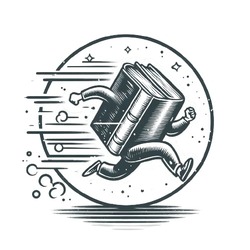One Sentence Summary:
The book ‘Gödel, Escher, Bach: An Eternal Golden Braid’ by Douglas Hofstadter explores the interplay between mathematics, art, and music through an analysis of the works of mathematician Kurt Gödel, artist M.C. Escher, and composer Johann Sebastian Bach.
Book Genre:
Non-Fiction, Philosophy, Science, Mathematics, Music.
Main Topic of the Book:
The main topic of the book is the concept of self-reference and its implications on human cognition, creativity, and artificial intelligence, as seen through the lenses of mathematics, art, and music.
Key Ideas:
- Connection between patterns and meaning in various disciplines such as mathematics, art, and music.
- Exploration of self-referential systems and their impact on human thought processes.
- Examination of the limitations and potential of artificial intelligence.
- Comparison of different levels of organization and complexity in systems.
- Influence of paradoxes and logical puzzles on human reasoning.
Main Parts of the Book and Short Summary:
- Part I: GEB
- Part II: Contracrostipuntal Thoughts
- Part III: Recursive Structures and Processes
- Part IV: The Medium is the Message
- Part V: Themes and Variations
The first part introduces the main themes of the book, including self-reference, recursion, and the limitations of formal systems. It also gives a brief overview of the lives and works of Gödel, Escher, and Bach.
This section delves deeper into the concept of self-reference and its implications on human creativity, language, and perception. It also explores the idea of artificial intelligence and its potential in mimicking human thought.
The third part focuses on recursive structures and processes in mathematics, art, and music. It examines how these disciplines use self-reference to create complex and meaningful patterns.
In this section, the author discusses the limitations of symbolic representation in communicating complex ideas, as well as the role of abstraction in understanding reality.
The final part of the book ties together all the themes and ideas explored in the previous sections and proposes a theory of consciousness and creativity based on self-reference and recursion.
Key Takeaways:
- Patterns and meaning are fundamental to human cognition in various disciplines.
- The concept of self-reference plays a crucial role in understanding consciousness, creativity, and language.
- Paradoxes and logical puzzles can reveal limitations and boundaries in formal systems.
- Recursion and self-reference are essential elements in creating complexity and meaning in systems.
- The potential of artificial intelligence is limited by its inability to understand self-reference and recursion.
Author’s Background and Qualifications:
Douglas Hofstadter is an American professor of cognitive science and computer science at Indiana University, best known for his research on self-reference, creativity, and artificial intelligence. He has received numerous awards and honors for his work, including the Pulitzer Prize for his book ‘Gödel, Escher, Bach: An Eternal Golden Braid’ in 1980.
Target Audience:
The book is targeted towards readers who are interested in exploring the intersection of mathematics, art, and music, as well as those who are curious about consciousness, creativity, and the limitations of human thought.
Publisher and First Publication Date:
Publisher: Basic Books (USA), Penguin (UK)
First Publication Date: 1979

